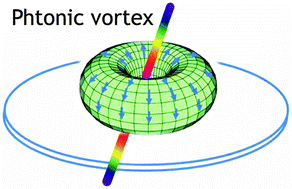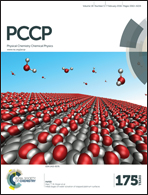Photonic vortices induced in a single-component phototropic liquid crystal†
Abstract
Using the direct coupling mechanism of light with a liquid via molecular absorption, i.e. the opto-thermal effect, we demonstrate the formation of well-controlled three-dimensional circular flows, i.e. a toroidal vortex, inside the liquid crystal (LC) droplet placed on a glass plate in its isotropic phase. We investigated the behavior of a droplet formed of a phototropic liquid crystal and composed of a mesogenic azobenzene derivative under the Gaussian beam light illumination in four different geometries. The light-induced liquid flows in the isotropic phase of the LC were visualized by dispersing carbon micro-particles in the volume of the LC. Movements of the particles could be observed under an optical microscope from the top and side views, respectively. The formation of the stable in time toroidal vortex (the photonic vortex) is dependent on laser light illumination geometry, properties of the liquid and substrate but does not depend on gravitational forces being similar for droplets situated either above or below the glass plate. The main mechanism of the indirect conversion of light into mechanical work is related to the temperature induced gradient of surface tension known as the Marangoni effect.


 Please wait while we load your content...
Please wait while we load your content...